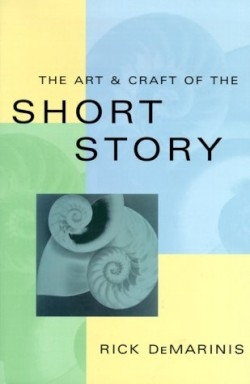
The Art and the Craft of the Short Story
“It’s like driving at night. You can only see as far as your headlights, but you can drive across the entire country that way.” Winner of two NEA fellowships, author of six novels and five short story collections and former writing professor at the University of Texas at El Paso, DeMarinis cheerfully lifts the words of E. L. Doctorow discussing the crafting of a novel. He claims the quote for the writing of the short story as well, plunging readers immediately into the experience of being a writer, the experience of creation and uncertainty. He writes with amazement of the surprises fiction always has in store for the dedicated writer, convincing readers that even writers rarely know where a story will take them.
Rules are set forth in a the first few chapters: keep a notebook, pay attention, write daily; he delivers the classic admonitions for writers with humor and a good amount of support from the dozens of writers he invokes, creating a potpourri of teaching voices for the student willing to listen, and this guide makes it easy to listen. In order to illustrate the tenets of short story writing, DeMarinis provides the plot lines of a variety of short stories and novels, excerpts varying from Ernest Hemingway to Flannery O’Connor to Somerset Maugham as well as a number of his own stories. He offers them all with an eye not only toward engaging his readers, but also toward exciting in them a desire to read the selected authors as a means of honing their critical skills and developing a repertoire of possible approaches to writing.
Most chapters provide exercises with which both the novice and the advanced writer might improve his/her skills. One of the more innovative exercises encourages writers to create their own form, similar to those used in poetry, and explore the ways in which that form and its restrictions can liberate the creative faculties. A great strength of the book is DeMarinis’s critical facility. His incisive comments on stories provide readers with critical scaffolding upon which they can create their own notions of art and craft. In looking at a V. S. Pritchett story, he places word choice under the microscope, forcing readers to consider the impact of four particular words, and the ways in which they allow the reader to see, and see into, the character.
DeMarinis’s advice on the art and craft of the short story helps writers focus, hone and enhance their craft through his lucid and comprehensive discussions of brainstorming, “beginnings, endings and the stuff in between,” characterization, theme, plot, form, imagery and revision.
Reviewed by
Camille-Yvette Welsch
Disclosure: This article is not an endorsement, but a review. The publisher of this book provided free copies of the book to have their book reviewed by a professional reviewer. No fee was paid by the publisher for this review. Foreword Reviews only recommends books that we love. Foreword Magazine, Inc. is disclosing this in accordance with the Federal Trade Commission’s 16 CFR, Part 255.
